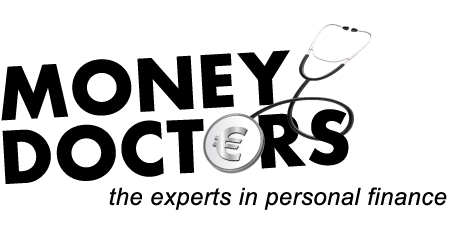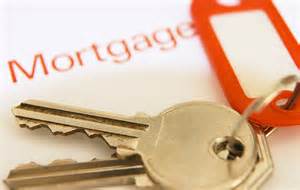We here in Ireland have always had a desire to own our homes. Unlike our neighbours on the European mainland, we have generally regarded renting as a short-term option. The boom of the Celtic Tiger years accelerated this trend, resulting in indiscriminate building, reckless lending, unsustainably high prices and the inevitable crash.
Back in January 2015, the Central Bank of Ireland introduced stringent new guidelines for mortgage lenders and revised them further in January 2017:
- For first-time buyers a maximum loan-to-value of 90% will apply.
- Home loans are subject to a limit of 3.5 times gross income.
These limits were imposed in order to prevent a new property bubble emerging in the future.
In addition to these limits, mortgage lenders have their own internal guidelines and tests to ensure that borrowers will continue to be able to afford their repayments into the future.
Ability to make the repayments, a key component in approving a loan, is based on a number of factors:
- The maximum percentage of net disposable income (monthly income after tax, PRSI and USC) deemed to be available to meet all loan repayments will range between 35% and 50%, depending on the level of income.
- The proposed mortgage repayments will be stress-tested at 2% above the current lending rate to ensure that repayments can still be afforded if rates rise.
- The potential buyer will have to show that his/her regular monthly savings and/or present rent paid are sufficient to cover the stressed repayments.
Saving for a deposit
The first thing you should do is complete a budget plan to establish how much you can save each month. Email Money Doctors (info@moneydoctors.ie) for a budget planner spreadsheet template – simple to operate and easy to understand, even tots itself up. You should also determine where you would like to buy your home and set yourself a price limit based on what you can afford.
In addition to the deposit you will need to factor in stamp duty (1% up to €1,000,000 purchase price) and legal fees ( up to 1% plus VAT & outlay ). Most banks offer regular monthly savings plans and you should ideally use one of these to start your savings habit, saving between €100 and €1,000 per month per person – you are normally limited one withdrawal per annum. As you will probably be unable to save the deposit in one year, you should review your budget annually and increase your monthly savings accordingly.
Help to buy scheme
In the 2017 budget, the government introduced a Help to Buy Scheme. First-time buyers of new homes with a maximum value of €500,000 can claim a refund of 5% of their tax paid over the previous four years subject to a ceiling of €20,000. A further condition is that the purchaser must be availing of a mortgage of at least 70% of the purchase price.
In the July 2020 Stimulus from the government, the Scheme was increased to € 30,000 or 10%… meaning if first time buyers saw a new property ( or self-build ) for € 300,000, the full 10% deposit was paid for by the Irish government i.e. the taxpayer … you .. me. To justify the 90% loan ( in this case € 270,000 ) an income of just over € 77,100 would be required. Only other expenses would be legal ( between c. 0.5% and 1% plus VAT and outlay ) stamp duty ( 1%) and a valuation ( c. € 150 )
The good news is that as in last October 2020’s Budget, Budget 2022 extended the scheme again to the end of 2022.
What to consider when buying
When buying a home, you must consider the possibility that this will be where you live for your lifetime. For this reason the location should be carefully evaluated. If you are young and single, an apartment in a town centre setting may be an attractive proposition because of location and the fact that you have no lawns to maintain. However, such a home would probably be most unsuitable for family life.
The factors to be considered should be:
- Convenience to work
- Availability of public transport
- Proximity to shops, schools, sports facilities and public parks
- The age of the house, its energy efficiency and state of repair
- Any zoning issues in the locality that could impact its future value
For a couple who intend to have children, a major consideration has to be the high cost of childcare and the possibility that they may have to live on one income for a number of years. In either of these scenarios, will they still be able to afford the mortgage repayments?
Which lender?
At the moment there are eight institutions offering mortgages, all with a range of plans, including the new kid on the block Avant Money and their ground-breaking 7 year fixed mortgage interest rate of 1.95% introduced in October 2020 – maximum loan to value is 60%. In 2021, this rate was matched by ICS Mortgages with their 3 and 5 year fixed rate – again for 60% loan to value. Some of these institutions offer incentives such as cash-back, discounted home insurance or a contribution towards solicitors’ fees. These can be attractive but you should remember that they are once-offs; if their lending rates are not the best available, the advantage can be wiped out in the first few years by the higher interest being charged. For the best possible advice, it is essential that you consult an independent mortgage intermediary.
Which mortgage?
The decision to be made here is between a fixed interest rate mortgage and a standard variable rate option.
Fixed rate mortgages give you the certainty that your monthly repayments will not increase for the duration of the fixed period. On the other hand, you will not benefit from any overall drop in lending rates during this period, should they occur. Breaking a fixed interest rate can be costly too and usually prohibitively so.
Standard variable interest rates can be generally lower than fixed but at a time when rates are at an all-time low, there is only one way they can go – upwards – and repayments can rise suddenly and substantially.
Here again, the advice you get from an independent mortgage intermediary is invaluable. Get in touch with Money Doctors (+353 1 278 5555 / info@moneydoctors.ie) for the latest mortgage interest rates, mortgage news or a one-to-one zoom mortgage consultation.
I have always found it useful to use acronyms to memorise structures or systems. For first-time borrowers, that acronym is TILE.
T – Terms and rates
Up to five years ago, you could obtain a 40-year term for your home loan or up to age 75, whichever came first. That has now been reduced to 30 to 35 years while the age threshold has been reduced to age 68 for some lenders. What is important to keep in mind is that you should not be repaying a mortgage after retirement. Over half the working population will only have the state pension to live on when they retire, which is currently €248.30 per week – if the government still has the ability to make these payments at your time of retirement. Bear in mind, for every person retired in 2019, there were 5 workers; by 2050, there will only be 2 workers for every person retiring.
Tracker rate mortgages were taken off the mortgage menu in November 2008, leaving only standard variable and fixed interest rates available. The current best standard variable rates at the time of going to press:
- Up to 50% – 2.45%
- 50% to 80% – 2.7%
- Over 80% – 2.7%
I – Income
All lending is based on the ability to repay, not on the asset. The method used to calculate the mortgage amount you are eligible to borrow is a combination of income multiples and net disposable income (NDI).
Once, 15 years ago, if you were earning over €60,000 with no dependents or debts, you could borrow five times your annual income. Accountants, solicitors and doctors attracted even higher multiples – even up to ten times their annual income. For couples, 4.5 times their combined incomes became the multiples norm. Compare this to the humble building society days when the rule was 2.5 times the main earner’s annual income and half the second earner’s annual income (to allow for the presumed female partner to stay at home if there was an abundance of children).
Today, under Central Bank regulations, it is 3.5 times your total income. Affordability is then factored in, which takes account of family circumstances, other borrowings and other commitments.
Job security is also of paramount importance. Contract, temporary or part-time work is in most cases a no-no while overtime and bonuses are taken into account by most mortgage lenders. For the self-employed, it is the net profit, not the gross that counts.
The lender will also check your credit history with the CentralCreditRegister.ie or the Irish Credit Bureau (ICB.ie) to ensure your financial past is clean. Both these credit agencies are made up of over 140 financial institutional members, including credit unions, who record every credit transaction and take note of every missed or late payment and financial judgements on their customers. One missed payment stays on the record for five years; with financial judgements, the record is there for life. All lenders check with either credit agency when they receive current account, credit card or loan applications. For those who want to check their own credit history, you can email or call either credit agency – it is a free service – with your name, date of birth and address, and within 3 to 4 days you will receive your report.
L – Loan to value
At one point in the glory days, 110% mortgages were available. Today lenders are offering 90% loans (the Central Bank will allow 15% of a lender’s mortgage book at this LTV) but only for first-time buyers. For second-time buyers the maximum is 80% loan to value as per the Central bank guidelines. This means you have to come up with that balance and most lenders prefer that you save it to reinforce repayment capacity rather than inherit or win it! That’s why a savings record is important – if you cannot save the mortgage repayment you are being asked to repay, it is difficult for the lender to believe you have the capacity to repay the mortgage.
E – Expenses
The main cost in buying a home for first-time buyers is the deposit – the difference between what you are borrowing from a lender and the purchase price. This will be 10% of the purchase price – so €350,000 purchase will require €35,000 savings – and the lender would prefer you to have saved this over a certain period. On top of the deposit, you will also need:
- Stamp duty (1% up to €1,000,000)
- Legals (generally 1% of purchase price + VAT)
- Valuation fees (for you and the lender) c.€150
- Basic furnishings and that lick of paint
So is a night on the TILES all that it is cracked up to be? Get in touch (+353 1 278 5555 / info@moneydoctors.ie) and let me know.

